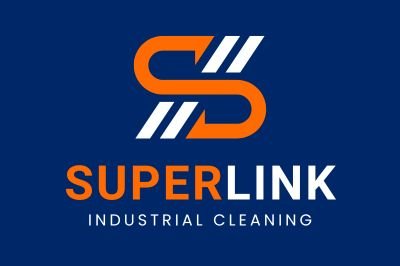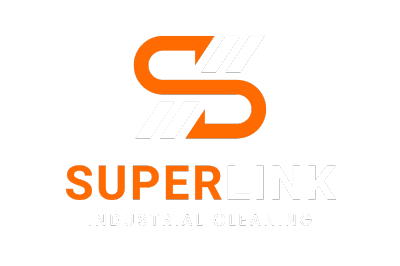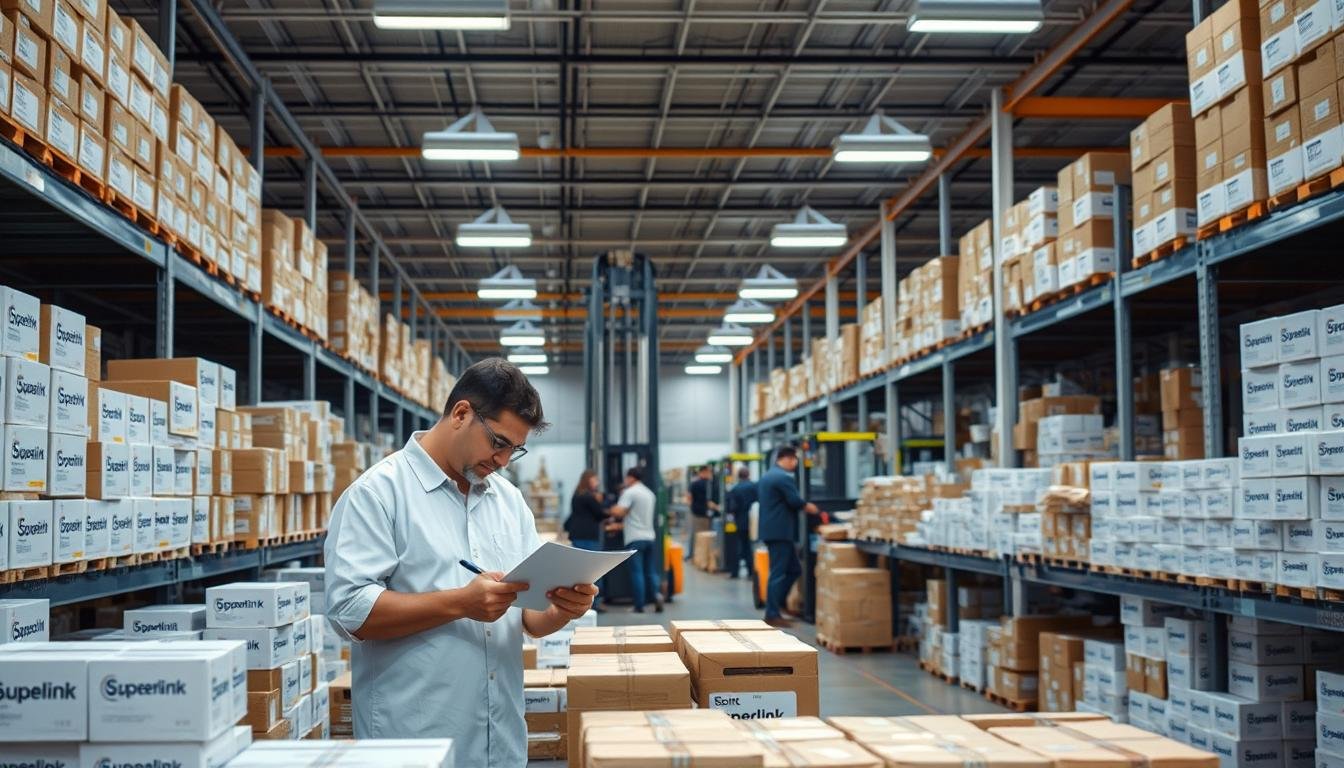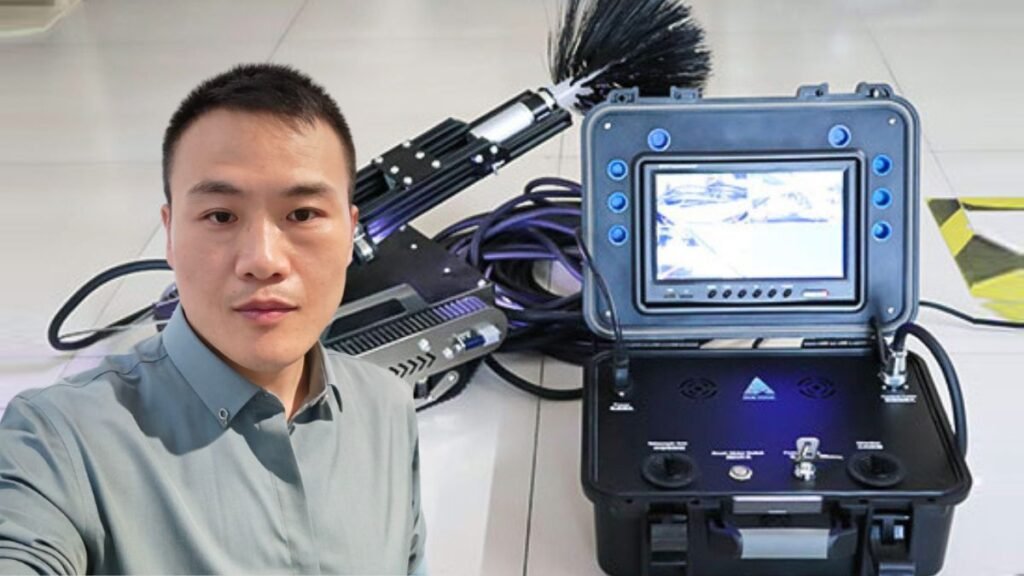Hey hey, air quality enthusiasts! Are you ready to explore industrial air duct cleaning equipment? Choosing the right tools is key for your cleaning business. Let’s find out how to pick the best gear for clean ducts and happy clients.
Air duct cleaning is more than gadgets. It’s about making spaces healthier and more efficient. Companies like Air-Care have been leaders for over 40 years. They operate from huge facilities to offer top equipment1.
We’ll cover everything from HVAC duct cleaners to advanced cameras. By the end, you’ll know how to make smart choices. Let’s start this cleaning journey together!
Key Takeaways
- Choosing the right industrial air duct cleaning equipment is key for success
- Equipment ranges from portable to truck-mounted units
- Proper tools boost cleaning efficiency and air quality
- Investing in quality equipment can quickly pay off
- Training and safety are vital for using equipment well
Outline
Get ready for an exciting journey through the world of industrial air duct cleaning! We’re about to dive deep into the nuts and bolts of keeping your ducts squeaky clean. From understanding the basics to exploring cutting-edge equipment, we’ve got you covered.
First up, we’ll explore the ins and outs of industrial air duct cleaning. Then, we’ll check out different types of Air Duct Vacuum Systems and Commercial Air Duct Cleaning Machines. We’ll also look at key features, benefits, and maintenance tips.

But wait, there’s more! We’ll tackle costs, regulations, and how to pick the perfect equipment for your needs. Plus, we’ll peek into the future of air duct cleaning tech. It’s going to be an info-packed adventure!
Did you know that advanced vacuum systems with HEPA filters capture 99.97% of particles as small as 0.3 microns? That’s some serious cleaning power! And for those big jobs, truck-mounted vacuum systems can significantly cut down cleaning time.
Let’s not forget about the SpinVax 1000XT, a powerhouse that spins at 1000 RPM. It’s part of a new wave of Commercial Air Duct Cleaning Machines that are changing the game. These rotary brush systems are perfect for residential and light commercial settings.
So buckle up! We’re about to take you on a whirlwind tour of everything you need to know about industrial air duct cleaning equipment. Let’s get started!
Understanding Industrial Air Duct Cleaning
Industrial air duct cleaning is key for keeping large facilities healthy. It removes harmful stuff from HVAC systems, making air better and systems work better. The Environmental Protection Agency says indoor air pollution is a big health risk, showing how important clean air ducts are.

Definition of Industrial Air Duct Cleaning
Industrial air duct cleaning means cleaning HVAC systems in big buildings. It uses special tools like Duct Cleaning Truck Mounts and Air Duct Rotary Brushes. These tools get rid of dirt, dust, and bad stuff from air ducts, filters, coils, and motors.
Importance of Clean Air Ducts
Clean air ducts are important for many reasons:
- They make indoor air better, which is good for everyone’s health.
- They help HVAC systems work better, which can save up to 15% on energy costs.
- They also help people stay at work more, as bad air can make people miss up to 20% more days.
The National Air Duct Cleaners Association says air ducts should be cleaned every three to five years. Some places need it more often.
Common Contaminants Found in Ducts
Industrial air ducts can have many bad things in them, like:
- Dust and allergens
- Mold and bacteria
- Food bits (in places that make food)
- Industrial dust and pollutants
These things can make allergies and breathing problems worse for up to 30% of workers. It can hurt how well they work. Cleaning regularly with tools like Duct Cleaning Truck Mounts and Air Duct Rotary Brushes is key for a healthy place and efficient HVAC systems.
Types of Industrial Air Duct Cleaning Equipment
Let’s explore the world of air duct cleaning tools! These tools are key for keeping indoor air clean and healthy. From portable systems to big truck-mounted ones, there’s a tool for every cleaning job.
Portable vs. Truck-Mounted Systems
Portable systems are great for small jobs. Truck-mounted systems are perfect for big spaces. They use vacuum cleaners with strong motors to clean out dirt and debris from ducts. These tools are perfect for quick clean-ups and getting into tight spots.
Negative Air Machines
Negative Air Duct Cleaning Equipment uses airflow over 2000 CFM for big jobs. These machines are like super vacuums, creating negative pressure to pull out bad stuff. They’re vital for keeping air clean in large buildings.
Air Duct Cleaning Brushes
Rotary brushes are great for home duct systems. They spin fast to remove mold and tough debris. The SpinVax 1000XT, for example, spins at 1000 RPM and has a self-adjusting brush for different duct sizes. These tools are perfect for reaching hard spots!
| Equipment Type | Best For | Key Feature |
|---|---|---|
| Portable Systems | Small Jobs | Flexibility |
| Truck-Mounted Systems | Large Industrial Spaces | Power |
| Negative Air Machines | Commercial Ductwork | High Airflow Rate |
| Rotary Brushes | Residential Systems | High-Speed Scrubbing |
Choosing the right air duct cleaning equipment can save a lot of time and effort for technicians6. With these amazing tools, keeping your ducts clean is a breeze!
Key Features to Look for in Equipment
Choosing the right equipment for Ductwork Decontamination Services is key. Let’s look at the important features that make air duct cleaning tools work well and efficiently.
Filtration Systems
High-quality filtration is a big deal in air duct cleaning. HEPA filters are top-notch, catching tiny particles like dust, pollen, and mold. These filters greatly improve air quality, making them essential for any serious cleaning job.
Mobility and Size
The size and mobility of your equipment are critical. Truck-mounted vacuums are powerful for big commercial jobs. Portable units are great for smaller spaces. Both can clean HVAC systems well when used right.
Ease of Operation
Equipment that’s easy to use is vital for efficient cleaning. Look for tools with adjustable air pressure, like air whips and blow guns. These tools make it easy to remove particles from ducts and vents. NADCA Certified Equipment often has ergonomic features that make it comfortable and productive for operators.
When picking air duct cleaning tools, think about maintenance costs and replacement parts. Planning ahead ensures your equipment lasts long and works well. The right tools make your job easier and give your clients better results.
| Equipment Type | Best For | Key Features |
|---|---|---|
| Truck-mounted Vacuums | Large Commercial Jobs | High Power, Large Capacity |
| Portable Vacuums | Smaller Projects | Versatility, Comparable Suction |
| HEPA Vacuums | All Jobs | Superior Filtration, Wet/Dry Capability |
Benefits of Industrial Air Duct Cleaning
Clean air ducts offer many advantages for your workplace. Let’s explore the benefits of using Industrial Air Duct Cleaning Equipment and HVAC Duct Cleaners. They keep your air system in excellent condition.
Improved Air Quality
Clean air is vital for a healthy work environment. The EPA says indoor air can be 5 to 7 times more polluted than outdoor air. This makes air duct cleaning essential.
Regular use of Industrial Air Duct Cleaning Equipment can greatly reduce airborne contaminants. This leads to fewer sick days and healthier employees.
Enhanced Energy Efficiency
Clean ducts mean your HVAC system works less hard. This efficiency boost can save a lot on monthly energy bills. From 2015 to 2020, the U.S. air duct cleaning industry revenue grew by 0.4% annually. It reached $478.1 million, showing the growing recognition of these benefits.
Prolonged Equipment Life
Regular cleaning with HVAC Duct Cleaners can extend your HVAC system’s life. The National Air Duct Cleaners Association suggests cleaning ducts every 3 to 5 years for best performance.
This maintenance not only extends equipment life but also prevents fire hazards from dust and debris.
| Benefit | Impact |
|---|---|
| Air Quality | Reduces airborne contaminants, fewer sick days |
| Energy Efficiency | Lower energy bills, reduced carbon footprint |
| Equipment Longevity | Extended HVAC system life, fewer repairs |
Investing in quality Industrial Air Duct Cleaning Equipment has many benefits. It improves your work environment, reduces energy costs, and ensures your HVAC system works well for years. Remember, clean air ducts are essential for a productive and comfortable workplace!
Maintenance of Air Duct Cleaning Equipment
It’s important to take care of your air duct cleaning equipment. This ensures it lasts long and works well. Here are some simple tips to keep your Commercial Air Duct Cleaning Machines in great condition!
Regular Inspection Checklist
Regular checks on your equipment are essential. The National Air Duct Cleaning Association (NADCA) suggests yearly inspections for healthcare facilities. Make a checklist to include:
- Checking for loose or damaged parts
- Inspecting filters and hoses
- Examining electrical connections
- Looking for signs of wear on brushes and vacuum attachments
Cleaning Protocols
Cleaning your cleaning equipment is also important. For Air Duct Vacuum Systems, follow these steps:
- Empty and clean collection tanks after each use
- Wipe down external surfaces
- Clean or replace filters regularly
- Sanitize brushes and attachments
Replacement of Parts
Parts do wear out, even with good care. Watch for:
- Filters: Replace as per manufacturer’s guidelines
- Brushes: Look for signs of wear or damage
- Hoses: Check for cracks or leaks
- Vacuum motors: Listen for unusual noises
Replacing parts quickly keeps your equipment efficient. This can save on energy costs and avoid costly repairs. By following these tips, your air duct cleaning equipment will stay in great shape. This ensures excellent service for your clients!
Costs Associated with Air Duct Cleaning Equipment
Let’s talk money! Investing in air duct cleaning equipment might seem pricey. But it’s all about the long game. I’ll break down the costs and show you how these tools can save you big bucks over time.
Initial Investment
The upfront cost for air duct cleaning equipment varies. Duct Cleaning Truck Mounts, the heavy hitters of the industry, can be a significant investment. For smaller operations, portable systems and Air Duct Rotary Brushes offer more budget-friendly options. Residential air duct cleaning typically costs between $300 and $500, while commercial properties may see prices from $450 to $1,000 or more.
Long-term Cost Savings
Clean ducts boost HVAC efficiency, potentially lowering energy costs. This means less strain on your system and fewer replacements down the road. Plus, happy clients lead to repeat business!
Cost-Effectiveness Analysis
Let’s crunch some numbers:
| Service | Average Cost | Potential Savings |
|---|---|---|
| Residential Cleaning | $300 – $500 | Improved HVAC efficiency |
| Furnace Duct Cleaning | $100 – $150 | Extended equipment life |
| AC Vent Cleaning | $25 – $35 per vent | Reduced allergens |
| Commercial Cleaning | $450 – $1,000+ | Increased productivity |
While the initial costs may seem high, the long-term benefits often outweigh them. Clean ducts can improve air quality, reduce allergens, and prevent respiratory issues. This translates to healthier environments and potentially lower healthcare costs for your clients.
Investing in quality equipment like Duct Cleaning Truck Mounts and Air Duct Rotary Brushes can set you apart in the market. It’s not just about cleaning ducts; it’s about providing a valuable service that pays off for everyone involved!
Regulatory Standards and Compliance
Let’s explore air duct cleaning standards! These rules ensure our safety and quality work. We’ll cover OSHA, EPA, and more, making it easy to understand.
OSHA Guidelines
OSHA focuses on workplace safety. They require us to wear the right gear and follow safety rules. It’s all about coming home safe every day!
EPA Recommendations
The EPA cares about the environment. They recommend using eco-friendly Indoor Air Quality Solutions. Staying updated with industry standards is key for quality and professionalism.
Industry-Specific Regulations
The National Air Duct Cleaners Association (NADCA) sets high standards with ACR-2021. It guides us in cleaning HVAC systems to certain cleanliness levels. This standard is our guide, but it’s flexible for different jobs.
For kitchen exhaust systems, NFPA 96 sets inspection rules based on cooking type and volume. High-volume places need checks every quarter, while low-volume ones can go a year. A full hood cleaning costs between $400 and $600.
Following these rules is more than avoiding fines. It’s about excellent service, health, and energy savings. Regular cleaning reduces fire risks and keeps equipment running well17. It benefits everyone!
| Standard | Focus Area | Key Point |
|---|---|---|
| NADCA ACR-2021 | HVAC Systems | Comprehensive cleaning guidelines |
| OSHA | Worker Safety | Proper use of cleaning tools |
| EPA | Environmental Impact | Eco-friendly cleaning solutions |
| NFPA 96 | Kitchen Exhaust Systems | Inspection frequency guidelines |
By following these standards, we’re not just cleaning ducts. We’re making spaces healthier and safer for everyone. That’s something to get excited about!
Choosing the Right Equipment for Your Needs
Finding the best air duct cleaning equipment is key to a healthy home. The right tools help get rid of dust, dirt, pollen, mold, and allergens from your HVAC system.
Assessing Facility Size
Think about your facility’s size when choosing equipment. Truck-mounted vacuums are great for big jobs and HVAC systems. They can hold more dirt and are outside, which cuts down on indoor mess.
For smaller systems, portable vacuums might do the trick. They’re easy to move around but might not have as much power as truck-mounted ones.
Understanding Specific Cleaning Requirements
Each cleaning task needs its own tools. Air compressors with different attachments are vital for a deep clean. Rotary brushes and air whips are great for getting into tight spots.
In big buildings, high-pressure air systems are needed to catch tiny dust particles.
Engaging Professional Consultation
Getting expert advice is important for Ductwork Decontamination Services. Professionals can figure out what you need and suggest the best equipment. They make the job faster and more effective.
Remember, the National Air Duct Cleaners Association (NADCA) says to clean air ducts every 3 to 5 years. Some methods can stretch this to 6 to 8 years.
By picking the right equipment and getting professional help, you can make your air cleaner, save energy, and cut down on yearly costs. It’s also important to keep your equipment in good shape for it to work well for a long time.
Best Brands in Industrial Air Duct Cleaning Equipment
Let’s explore the top Industrial Air Duct Cleaning Equipment brands. They ensure your ducts are clean and your air quality is excellent.
Leading Manufacturers
ProAir™ is the #1 Best Rated Air Duct Cleaning Equipment Manufacturer in the United States and Canada. Their gear cuts down duct cleaning times, making work more efficient in many fields. NIKRO Industries offers gas-powered and portable HEPA filtration electric vacuum systems. These are great for catching dust and allergens in homes and businesses.
Product Offerings Compared
DryMaster Systems is the top supplier of HVAC Duct Cleaners. They have equipment with fast spinning brushes, advanced cameras, and strong suction. Abatement Technologies® has the HEPA-AIRE 2500 portable power vac, perfect for homes and small businesses. Hypervac Technologies introduces the Revolution Hybrid Vacuum and Cobraview Camera System.
Customer Feedback
Experts using these brands say they work better. The air duct cleaning business is growing fast, with profits between 50% to 70%. This shows customers are happy. ProAir Industries’ packages for new businesses and HVAC contractors get good reviews in the USA and Canada. These brands are making air duct cleaning better and more efficient for all kinds of businesses.
How to Evaluate Equipment Performance
It’s important to check how well Air Duct Vacuum Systems and Commercial Air Duct Cleaning Machines work. This helps keep the air inside buildings clean. Let’s look at what to consider when checking these tools.
Key Performance Indicators
When checking air duct cleaning equipment, see if it can remove dirt well. A good system should cut down airborne dust by up to 60%. It should also lower mold risk in ducts by 50% after cleaning.
Look for machines that can make at least 4,000 CFM. This ensures they can clean duct sections up to 25 feet long.
User Experience Metrics
How easy it is to use the equipment matters a lot. Portable pressure washers that make 500 PSI or less are best for coil and drip pan cleaning. Choose equipment with inflatable air bladders for duct isolation. They come in different sizes and inflate quickly with portable electric inflators.
User happiness is also important. Professional air duct cleaning services usually make people happy 85% of the time.
Maintenance History
Keeping air duct cleaning equipment in good shape is key. A well-kept system can save you about $200 a year on energy bills because it works better. Keep an eye on how often you need to service or replace parts. Remember, dirty air ducts can hold up to 20 pounds of dirt and debris each year, hurting system performance.
| Performance Metric | Target Value | Impact |
|---|---|---|
| Airflow Rate | 4,000 CFM minimum | Ensures thorough cleaning |
| Dust Reduction | Up to 60% | Improves air quality |
| Energy Efficiency Increase | 15% | Reduces energy bills |
| Mold Growth Risk Reduction | Up to 50% | Enhances health safety |
By looking at these points, you can choose the right Commercial Air Duct Cleaning Machines. Remember, the right choice and care for your equipment can greatly improve indoor air quality and save on energy.
Training and Safety Protocols
Hey there, fellow duct cleaning enthusiasts! Let’s explore safety and training in our field. It’s not just about finishing the job; it’s about doing it safely and well. I have some valuable insights to share that will make your duct cleaning work both productive and safe.
Operator Training Resources
Proper training is essential for mastering duct cleaning. With the right skills, operators can use Duct Cleaning Truck Mounts and Air Duct Rotary Brushes like experts. Did you know that well-trained pros can cut cleaning time by 25% while doing a thorough job? That’s efficiency at its finest! Plus, staying updated with new tech helps you follow industry rules, reducing non-compliance risks by half.
Safety Equipment Utilization
Safety gear is a must, not just a nice-to-have. When using Duct Cleaning Truck Mounts, you need to wear the right gear. Use cut-proof gloves with a grade of five or higher – they’re your hands’ best friends. Don’t forget your back harness for heavy lifting, and knee pads for crawling through tight spaces. And hey, protect your noggin with a bump cap and your ears with earplugs – they’re lifesavers in noisy commercial jobs.
Emergency Protocols
Being ready for the unexpected is part of the job. With solid training, you can spot and tackle up to 70% of possible dangers, from electrical risks to harmful substances. Always keep your N95 mask handy for dusty situations, and remember, specific respirators are a must if you’re dealing with chemical vapors. Regular checks on your gear are key – you don’t want a worn-out glove letting you down mid-job!
By following these protocols, you’re not just playing it safe. You’re boosting your efficiency, extending the life of your equipment, and even improving air quality for building occupants. It’s a win-win all around!
Future Trends in Air Duct Cleaning Technology
The air duct cleaning industry is on the verge of a big change. New tools and solutions are changing how we clean air ducts.
Advances in Cleaning Technology
Robotics and AI are leading this change. Now, robots can clean ducts with great precision and show what they’re doing live. They can reach places humans can’t, making cleaning better.
AI helps by checking airflow and finding blockages right away. This means technicians can fix problems before they get worse.
Eco-Friendly Innovations
The industry is getting greener. People want services that are good for the planet. New cleaning agents and tools save energy and are better for the environment.
Systems that use charged particles to clean are also becoming popular. They clean better with less work. These green methods make air cleaner and help the planet.
Potential Market Changes
The market is moving towards better, more focused services. Now, we can watch HVAC systems from afar and see how they’re doing. This helps systems work better and saves money on energy.
The pandemic made people more aware of air quality. This has led to more demand for cleaning HVAC systems.
As things change, learning new skills is key. Getting certified keeps technicians up to date. This means air duct cleaning will be better, greener, and more efficient in the future.
Conclusion
Hey hey, fellow air duct cleaning enthusiasts! We’ve explored the world of industrial air duct cleaning equipment. Let’s quickly recap the cool insights we’ve gathered.
Recap of Key Insights
First off, clean air ducts are key for our health and wallets. Did you know people in dirty duct buildings are 60% more likely to get respiratory issues? Yikes! Regular duct cleaning is a big deal, folks. It improves indoor air quality and boosts employee happiness and work.
Now, let’s talk money. Clean ducts mean better airflow, which means more efficient systems and lower energy bills. Homeowners could save up to 20% on utility costs with regular duct cleaning. That’s a big win. Plus, clean ducts can also make your HVAC equipment last longer, saving on repair and replacement costs.
Final Recommendations
So, what’s the takeaway? Invest in top-notch Ductwork Decontamination Services and NADCA Certified Equipment. Your lungs (and wallet) will thank you! Clean your ducts every one to three years, based on your industry and pollutant levels. And if you work in dusty places like woodworking or metalworking, you might need to clean more often. Let’s keep those ducts clean and our air fresh!
FAQ
What is industrial air duct cleaning?
Industrial air duct cleaning removes dirt and pollutants from big HVAC systems in commercial buildings. It uses special tools to clean out dust and debris. This makes the air cleaner and the system work better.
Why is air duct cleaning important?
It keeps the air inside buildings healthy and improves energy use. Clean ducts cut down on allergens and mold. They also make sure air moves well around the building.
What types of equipment are used for industrial air duct cleaning?
You’ll see portable and truck-mounted vacuums, negative air machines, and brushes. These tools help get rid of dirt and stir up pollutants for cleaning.
How often should industrial air ducts be cleaned?
Ducts need checking every 1-2 years and cleaning when needed. Places with lots of pollution or sensitive people might need more cleaning.
What are HEPA filters, and why are they important in duct cleaning?
HEPA filters catch 99.97% of tiny particles. They’re key in cleaning equipment because they make sure the air is clean and safe.
What’s the difference between portable and truck-mounted cleaning systems?
Portable systems are good for tight spots. Truck-mounted systems are stronger and better for big jobs. They can handle more and clean deeper.
Are there any regulations governing industrial air duct cleaning?
Yes, OSHA sets safety rules for workers. The EPA gives tips on air quality. NADCA has standards for cleaning and equipment.
How can I choose the right air duct cleaning equipment for my facility?
Think about your building’s size, cleaning needs, how often you’ll use it, and your budget. Talking to a pro can help find the best fit.
What are some emerging trends in air duct cleaning technology?
New trends include robots for tough spots, green cleaning, and better imaging for checks. The focus is on energy-saving and quieter tools.
How do clean air ducts contribute to energy efficiency?
Clean ducts make HVAC systems work better, using less energy. When ducts are clear, air flows better, needing less power to keep temperatures right.






